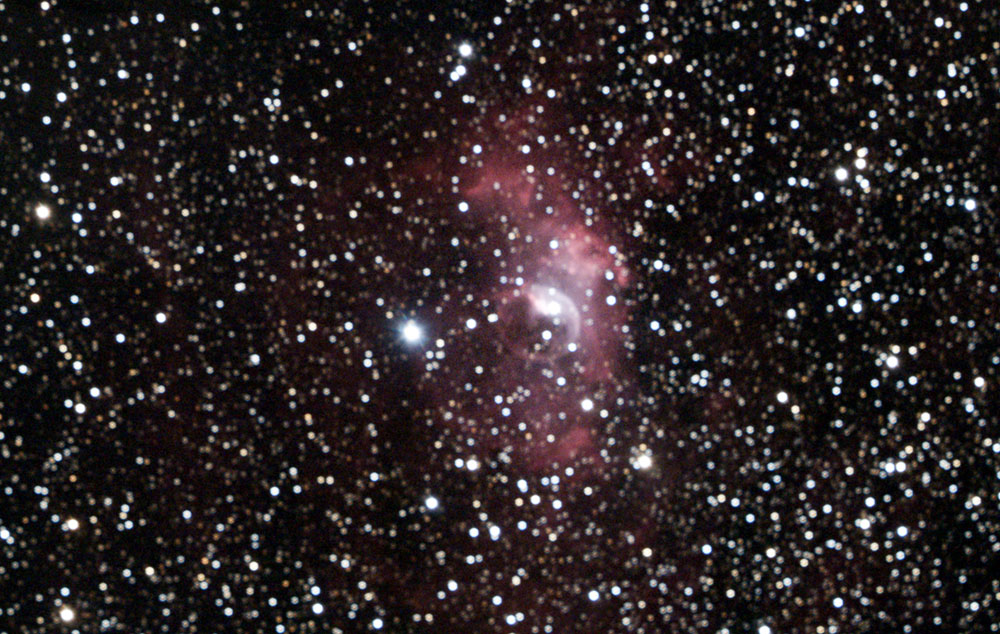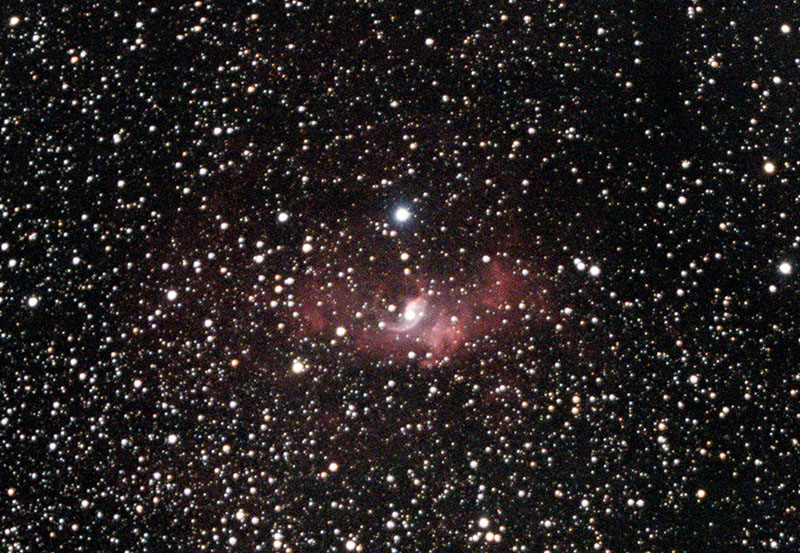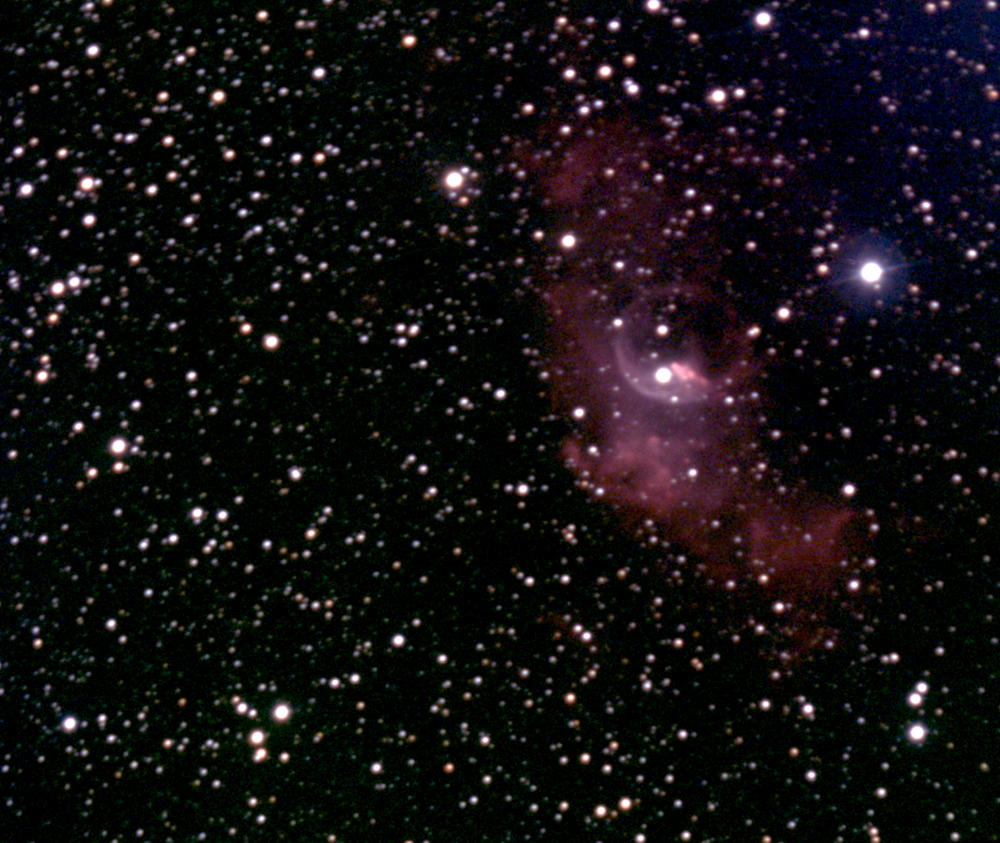
NGC 7635 Bubble Nebula
Magnitude: 10
Distance: Aprox: 7,100 light-years
Constellation: Cassiopeia
Diameter: 10 light-years
The Bubble Nebula was discovered in 1787 by William Herschel, a prominent British astronomer. It is being formed by an O star, BD +60º2522, an extremely bright, massive, and short-lived star that has lost most of its outer hydrogen and is now fusing helium into heavier elements. The star is about four million years old, and in 10 million to 20 million years, it will likely detonate as a supernova.
The Bubble Nebula is seven light-years across—about one-and-a-half times the distance from our sun to its nearest stellar neighbor, Alpha Centauri, and resides 7,100 light-years from Earth in the constellation Cassiopeia.
The seething star forming this nebula is 45 times more massive than our sun. Gas on the star gets so hot that it escapes away into space as a “stellar wind” moving at over four million miles per hour. This outflow sweeps up the cold, interstellar gas in front of it, forming the outer edge of the bubble much like a snowplow piles up snow in front of it as it moves forward.
As the surface of the bubble's shell expands outward, it slams into dense regions of cold gas on one side of the bubble. This asymmetry makes the star appear dramatically off-center from the bubble.
Taken 1/5/19 in Grand Rapids, Ohio by Russell Kille on a CPC 1100 with Hyperstar @ F2 and ZWO ASI294MC Pro camera


Together with NGC 7538
Taken 10/13/17 in Grand Rapids Ohio by Russell Kille on a CPC 1100 with Hyperstar @ F2 and ZWO ASI224MC non-cooled camera
